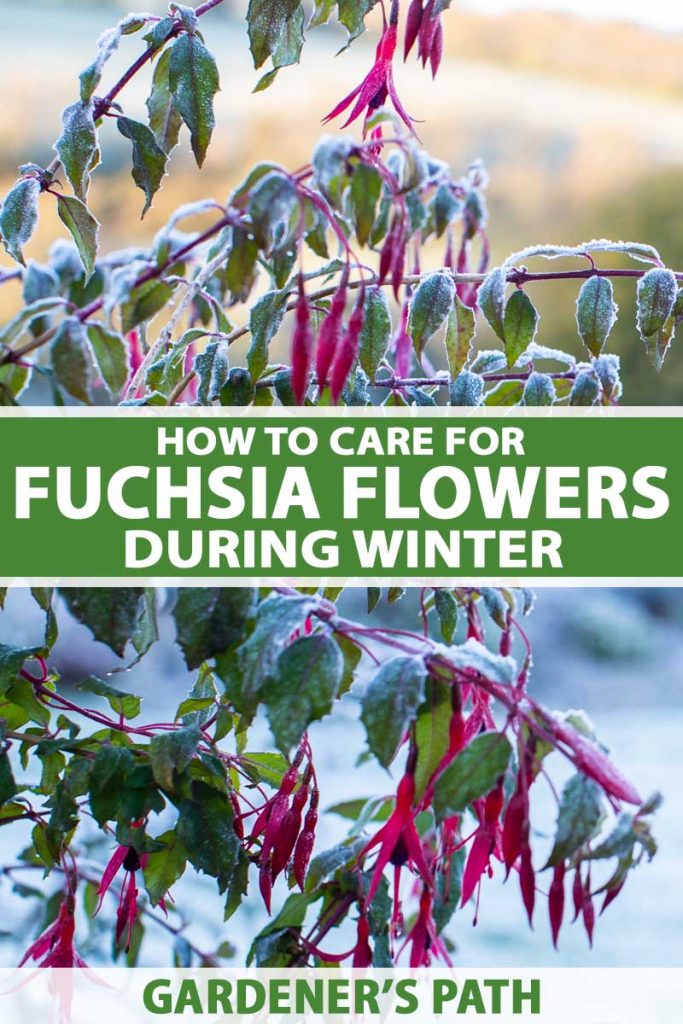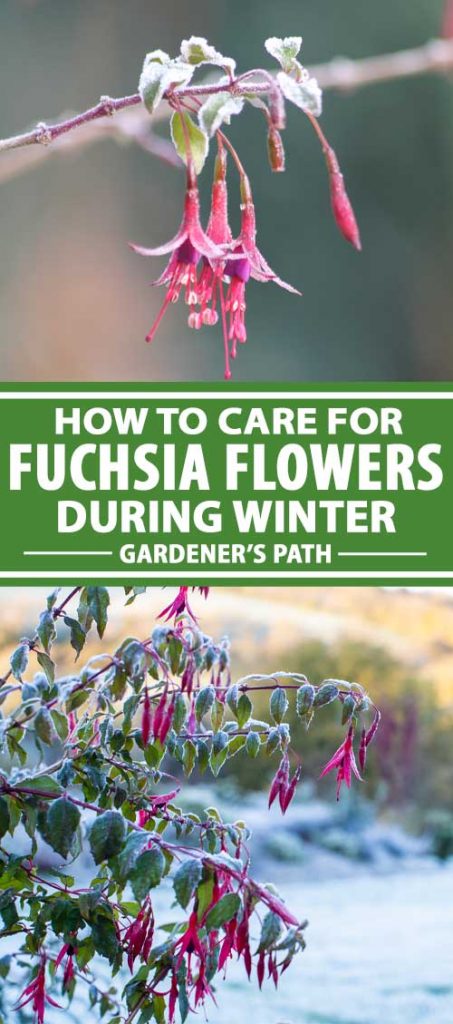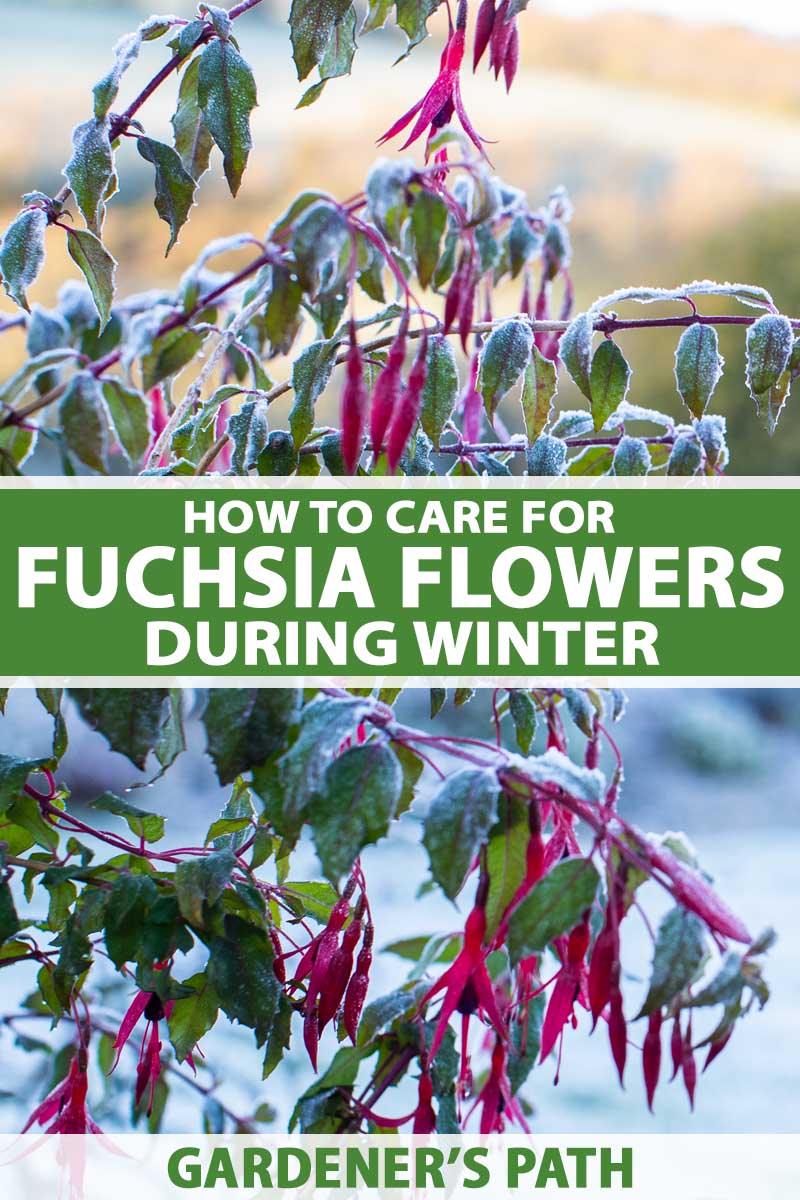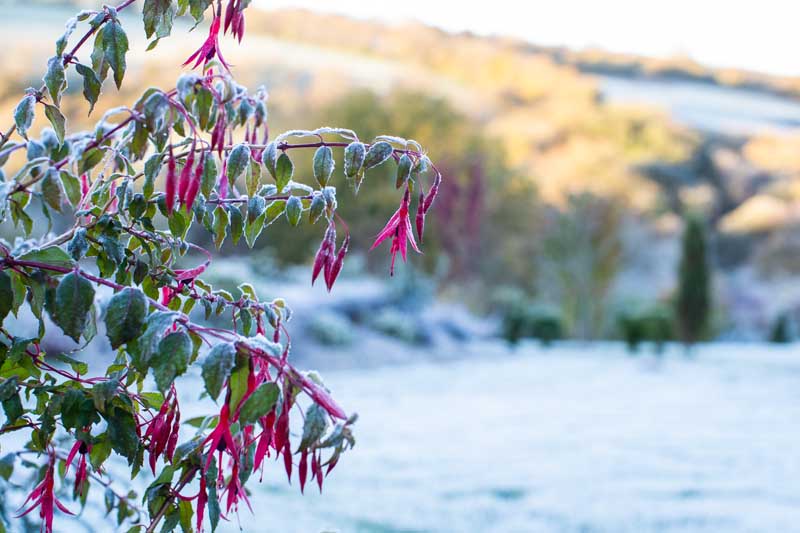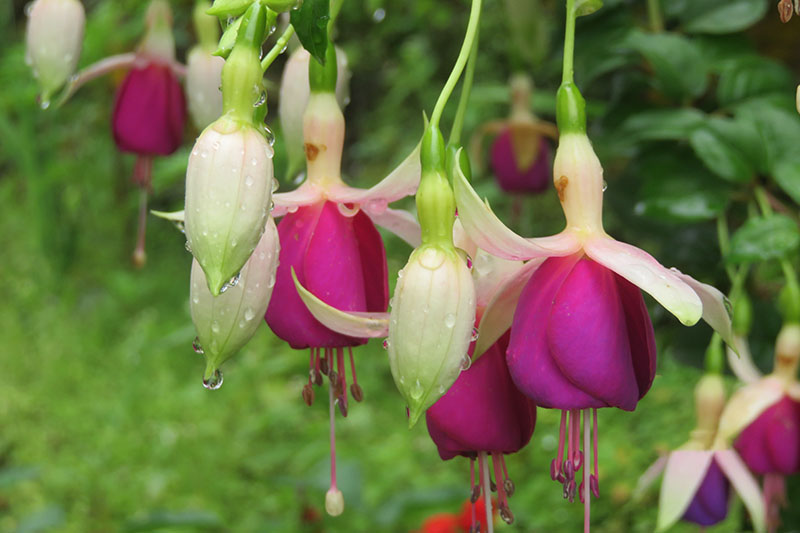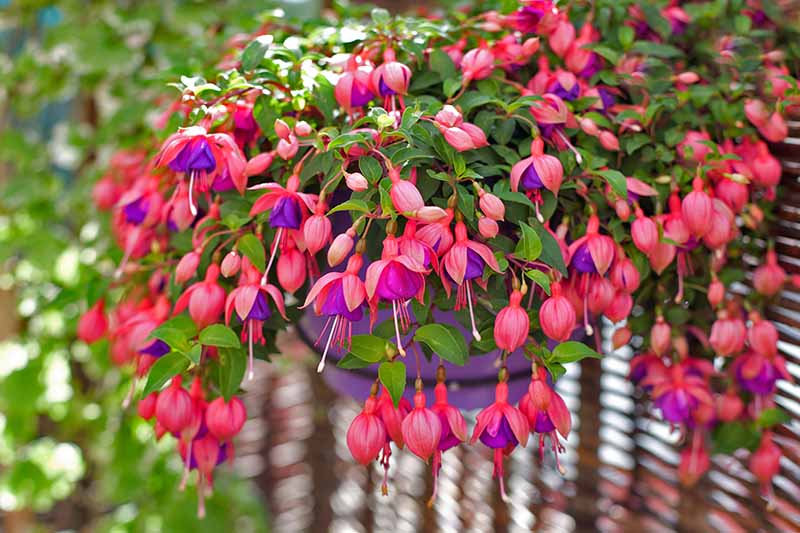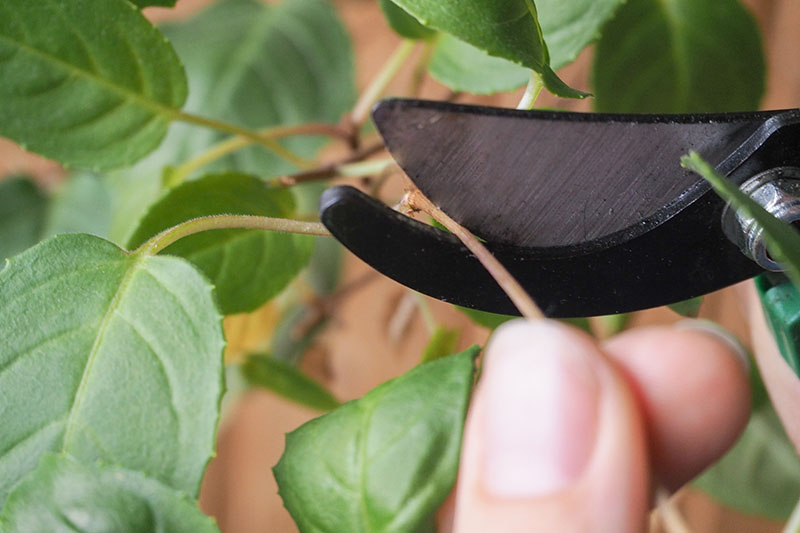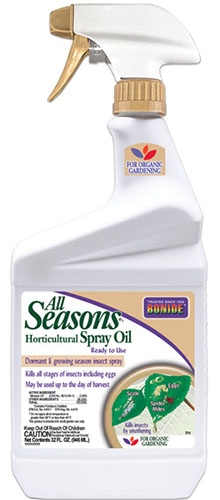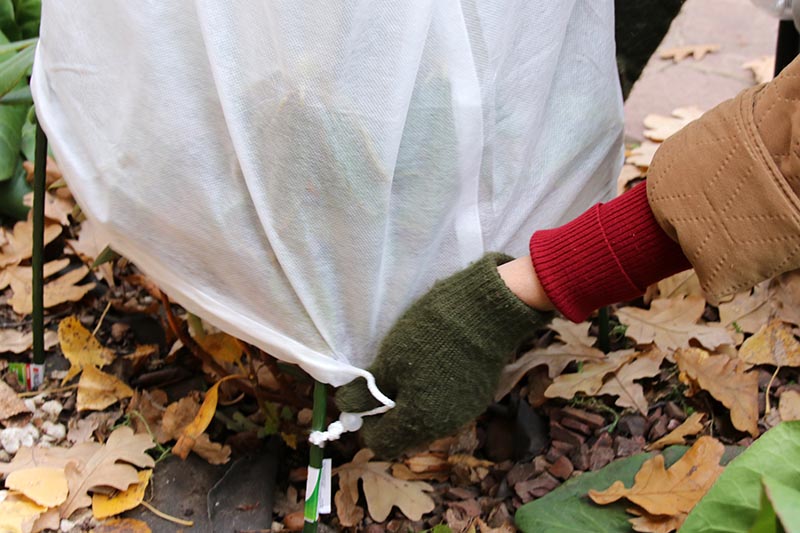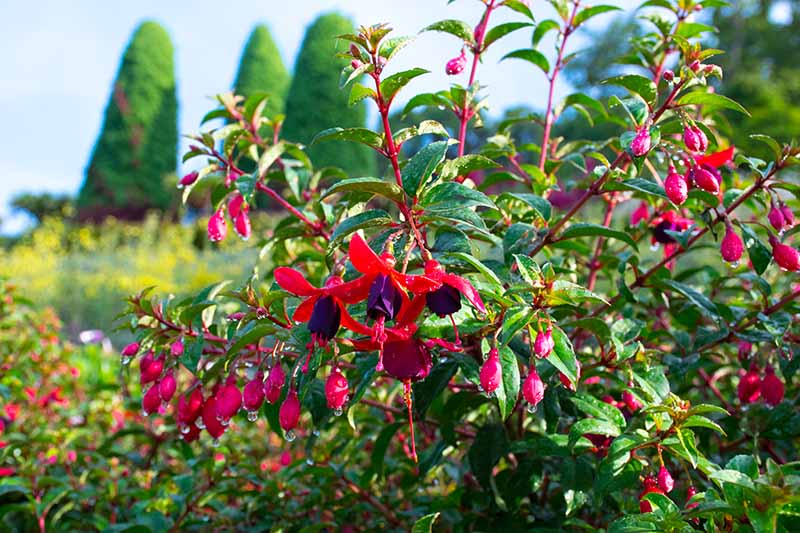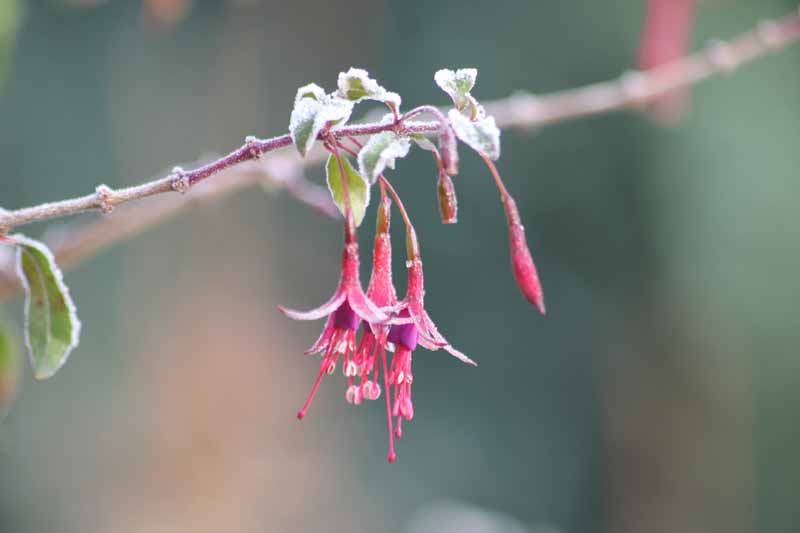These versatile flowers can lend color to a shady corner of your patio or show off a riot of blossoms in a sunny patch of your garden. In areas where the temperatures tend to stay above 32°F, hardy fuchsias can come back year after year, growing up to eight feet tall, depending on the variety. We link to vendors to help you find relevant products. If you buy from one of our links, we may earn a commission. But these types of fuchsia aren’t easy-come-easy-go annuals like petunias or zinnias, they are tender perennials and with a bit of preparation can be overwintered, ready to shine next season. These garden stunners have so much to offer and don’t deserve to be tossed on the compost pile after a season of working their colorful little hearts out in your yard. Whether you live in a region that doesn’t get too cold in the winter and you want to keep your in-ground hardy bush looking its best or you need to know what to do with your potted fuchsia through the cold months, this guide has you covered. Here’s what’s ahead: The first thing you need to do when you consider winter care for your fuchsia is to determine what plants you are dealing with. A potted plant is handled differently than one growing in the ground, and different varieties have specific needs.
How you prepare your plants for winter will also depend on whether you live in an area where temperatures drop to below freezing for weeks at a time or where you might just be dealing with a surprise frost now and then. We’ll help you sort it all out, so let’s get started.
A Bit About Fuchsia
There are thousands of named fuchsia cultivars and countless more natural hybrids growing in home gardens.
While they all originate in subtropical regions, many have been bred to handle a bit more cold. When I say “a bit,” I don’t mean that there are any types that can survive in the sub-zero temperatures of a northern winter. These perennials are still pretty tender. Fuchsia magellanica is one of the hardiest species and will thrive in USDA Hardiness Zones 7-10. Known as “hardy fuchsia,” this is the type you’ll often see at garden centers. In Zone 7-9, they will require some winter protection to help it through the cold months. The Solent Fuchsia and Flower Club in the United Kingdom has published a list of hardy fuchsias that have been identified by the British Fuchsia Society as being able to withstand winter for several years.
If you want to find a variety that you won’t have to worry about too much, it’s worth checking out their list when you purchase a plant. Any of these hardy types will grow happily in the ground in Zones 7-10, and can be overwintered in place. Then there are other cultivars – usually sold as potted plants or in hanging baskets – that will turn up their toes if they even hear a whisper of the word “frost.” You can bring these tender types indoors to keep as a houseplant during the cold weather.
There are also heat tolerant cultivars, which the Northwest Fuchsia Society can help you identify, that are ideal for growing indoors as they thrive the warm, dry air we typically have in our homes during the winter. If you live in Zone 6 or below and have a hardy fuchsia in a pot, you’ll need to bring that inside, too. Just keep in mind that F. magellanica doesn’t take to living indoors as well as the other varieties. That’s because they do best with temperatures around 40-50°F in the winter and tend to suffer in the dry air. Instead, you can winterize them, as described below, and keep them dormant in a cool garage, greenhouse, enclosed patio, or basement. If you’re not sure what particular type you are growing, it’s best to assume that any orange-flowered variety isn’t hardy. When in doubt, you should treat your plant as a tender fuchsia for the purposes of overwintering. Curious to know more about how to raise these showy beauties? Check out our guide to growing fuchsia to learn more.
How to Winterize Your Fuchsia
To give your hardy fuchsia a solid foundation to survive outdoors during the winter and return happy and healthy in the spring, fall cleanup is your first priority.
Just before your average first frost date, rake up and remove any debris like dead leaves and spent flowers from around your plants. This prevents pests and disease from overwintering in plant debris. Then, prune away any dead or diseased branches and remove any blossoms or leaves that haven’t already fallen off. Use this opportunity to give the bush some shape and lightly trim back any long overgrown stems. However, you don’t want to prune your fuchsia right back. The stems act as insulation over the cold months and a hard pruning can result in severe frost damage. Usually, blossoms and leaves will have fallen the first time a cold snap comes around, so if you’re doing your other chores in advance of this, just come back out after the first frost and remove any stragglers. You do this because the leaves can harbor fungi.
Cold Weather Care
For fuchsias that are staying outside, there are a few things you can do to get them set to handle whatever winter has to throw at them. Remember, this only applies if temperatures in your area remain above 30°F for the majority of the winter months.
Mature plants will have an established root system and will be able to withstand the cold far better than young plants. After you have cleared away any debris and given your plant a very light haircut, you can apply a layer of mulch. Place mulch around the base of the plant to protect the roots. That way, if a surprise freeze damages the branches, the root system will stay intact. Six inches of a natural mulch such as autumn leaves or wood chips should do the trick in colder areas, such as Zone 7 and 8. In warmer locations, you won’t need to apply quite that thick of a layer. An inch or two is fine. If your plant is young, you can be more generous with your mulch. Apply according to the manufacturer’s directions and spray once as you’re prepping your plants for the winter and again in January.
Bonide All Seasons Horticultural and Dormant Spray Oil This prevents the eggs of pests like mites and aphids from overwintering on your flora and causing problems as the temperatures warm up. There’s generally no need to add supplemental water during the winter unless you have a long dry spell.
Frost Protection
Even if you live in an area where the temperatures generally remain above freezing, there are always those days where Mother Nature has a surprise in store. Keep an eye on the weather forecast and be ready to take action to protect your fuchsia if necessary. If the soil appears dry, give it a good soak before the temperatures drop because a moist root ball freezes more slowly than a dry root ball. Moist soil holds and releases the heat more slowly than dry soil.
Then, cover the bush with an old sheet, a tarp, some burlap, plastic sheets, or cardboard to protect the branches from the cold. If you’re expecting snow or high winds, put sticks into the ground to prop the material on and use bricks to hold down the edges. What happens if you didn’t get out there in time to protect your plant? As long as the temperature didn’t remain below 29°F for more than a few hours, everything will probably be fine. You might lose some or even all of the branches, but as long as your plant is well mulched, the roots should survive and your bush will send up new shoots in the spring.
Potted Fuchsia
If you can’t let your fuchsia sit outside year-round, you’ll have to bring it inside or into a protected area before the first frost hits.
Before you bring any plant indoors, it’s a good idea to gently shake the branches to see if any bugs fly out. You should also inspect the leaves closely for pests and give it a quick spray of water from the hose to knock anything loose that you may have missed. If you are growing hardy fuchsia, you need to bring the plant to a spot where it won’t suffer from frost damage, but where temperatures are still cool enough so the plant can go dormant. A root cellar or garage wall adjacent to the heated part of the house, an insulated greenhouse, or enclosed patio would work well. You’re aiming to keep it in an area where the air temperature remains somewhere between 40-50°F. Now it’s time to snip or pull away all the leaves and any remaining flowers. Don’t cut the branches, though. We’re going to do that in the spring to encourage bushy growth when the plant is ready to start coming out of dormancy. During the winter months you’ll need to water it once a month or so to provide just enough moisture that the soil doesn’t dry out entirely. The goal is to keep your plant alive but not to encourage new growth. When spring rolls around, you can move it to a windowsill or other sunny location and resume normal watering as your plant starts to develop new growth. As new growth starts to come through, you can prune it back by a third to give it a compact shape and encourage bushy growth. For tender fuchsias, after checking for pests, pinch off the blossoms and place it in a sunny window where it will get at least six hours of sunlight a day. You can add supplemental lighting in the form of a grow light if you don’t have a sunny enough spot. Then just treat it as you would any other houseplant by giving it regular water. Don’t feed it though as you don’t want to encourage too much growth during the cool weather.
Bring Them Back to Life
After all risk of frost has passed, you can take your hardy potted fuchsia out of its winter location and harden it off before placing it back outside. If needed, this is a good time to repot your plant into a slightly larger container.
Start by bringing the plant outdoors into a protected, sunny location for an hour a day, gradually extending the time over the course of a week. When you see signs of new growth, you can prune the plant by a third, to encourage bushy growth. For tender plants, you can repot your plants, harden them off as described above, and bring them back outside. To repot, take the plant out of its current container and trim away any old, dead roots. Then, place it in its new pot and lightly fill with potting soil. Water the soil and add more dirt if necessary, but be careful not to pack down the soil too much because fuchsia doesn’t like having constricted roots. Osmocote Smart-Release Indoor Outdoor Plant Food For those growing in the ground, remove the mulch and apply an 18-18-18 (NPK) fertilizer to give them a springtime boost. Trim away any branches or leaves that were damaged by frost or prune your plant by up to one-third. The goal is to make the bush look tidy and shaped into a size you prefer.
Don’t Let Winter Get Your Fuchsia Down
Okay, confession time: I once spotted a handful of fuchsias in pots sitting on the curb to be picked up by the garbage collectors. I marched up to the house and asked them if I could rescue their plants and give them a good home. That’s how much I hate to see plants go to waste.
To this day, those hardy fuchsias are standing tall in my garden, three times the size they were in their little containers. And all it took was a little bit of preparation, a dash of mulch, and a blanket for the plant to snuggle with on those cooler nights. Now that you know how to take care of your fuchsia in the winter, whether it’s in a pot or the ground, you can keep enjoying it year after year. And you won’t have to worry about some stranger popping up at your door after they spotted your discarded fuchsias in a heap on the sidewalk. After you get them settled in for their long winter nap, come back and let us know how it went, and share your tips in the comments section below! And for more information on how to overwinter flowers in your garden, you’ll need these guides next:
How to Winterize Astilbe Plants: 5 Easy Steps How to Overwinter Bird of Paradise Plants How to Winterize Hardy Garden Mums
© Ask the Experts, LLC. ALL RIGHTS RESERVED. See our TOS for more details. Products photos via Arbico Organics and Osmocote. Uncredited photos: Shutterstock. With additional writing and editing by Clare Groom.
